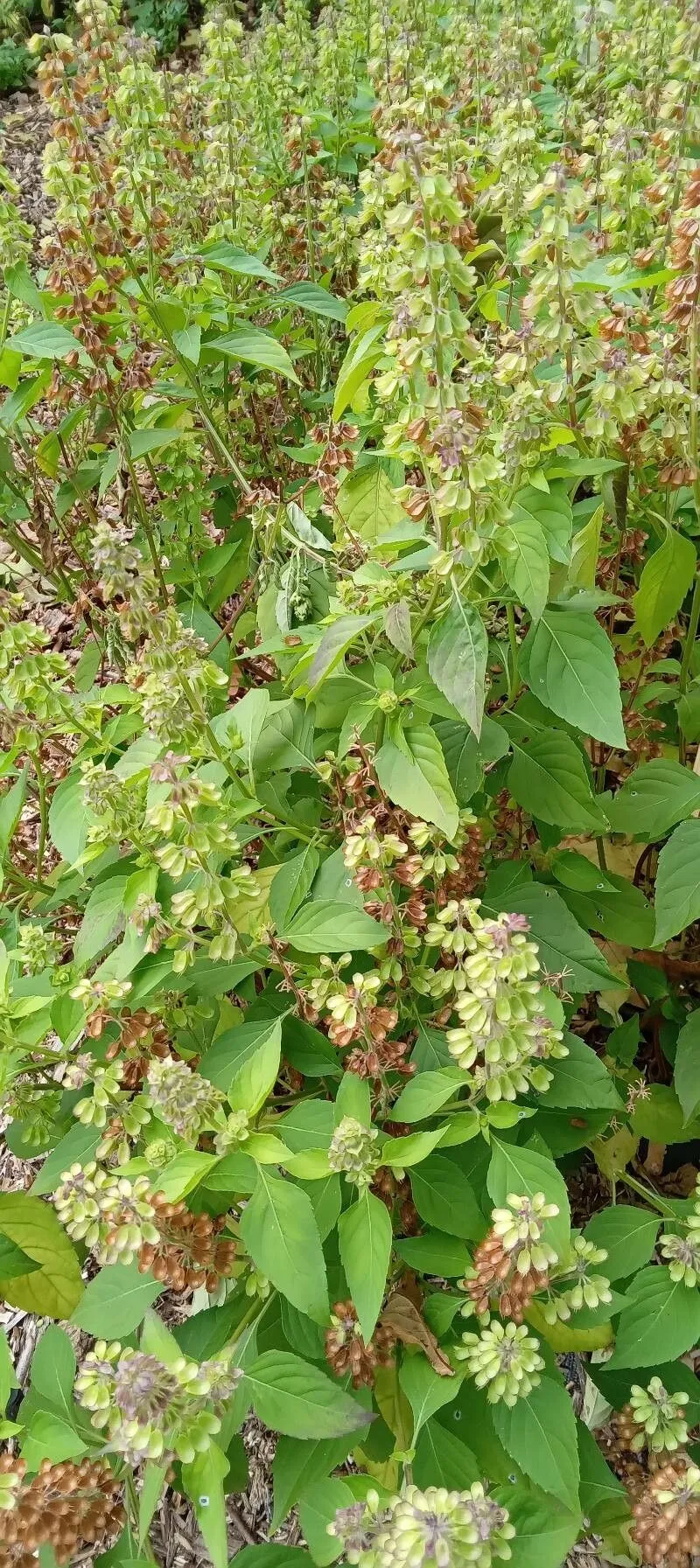
Author: Mill.
Bibliography: Gard. Dict. ed. 8: n.º 5 (1768)
Year: 1768
Status: accepted
Rank: species
Genus: Ocimum
Vegetable: False
Observations: Trop. & Subtrop. America
Least basil, known scientifically as Ocimum campechianum, is a notable member of the Lamiaceae family, which encompasses a diverse range of aromatic plants. First documented by Miller in the 8th edition of the Gardeners Dictionary in 1768, this plant plays a significant role in both tropical and subtropical regions of the Americas.
Ocimum campechianum is a lesser-known species within the broader basil genus, which is renowned for its culinary and medicinal uses. Despite its moniker as the “least basil,” this plant stands out due to its adaptability and the charming qualities it shares with its more famous relatives.
Thriving in the warm climates of tropical and subtropical America, the least basil has adapted to various environmental conditions, showcasing the resilience that members of the Lamiaceae family are known for. Its presence in these regions underlines the biodiversity of the flora and the ecological importance of such versatile plants.
Characterized by its aromatic leaves and potentially small stature compared to other basil varieties, Ocimum campechianum is often employed in traditional practices for both its flavor and potential health benefits. The plant’s foliage might be used similarly to other basils, lending its distinct aroma and essence to culinary dishes, teas, and herbal remedies.
While it may not be the focal point in a botanical collection or the star of the kitchen herb garden, the least basil holds its own as an intriguing plant species with rich historical roots and significant ecological contributions. Its study and appreciation can add to the understanding of plant adaptability and the intricate tapestry of plant life in the Americas.
In summary, Ocimum campechianum or least basil, is a humble yet fascinating species within the Lamiaceae family, well-documented by Miller in the late 18th century. Its role in tropical and subtropical America, along with its aromatic qualities, underscores its value and the broader significance of understanding lesser-known plants in our ecosystems.
Por: alfabaca, alfavaca-do-campo
Eng: least basil, mosquito basil, basil
Swe: peruansk basilika
En: Least basil, Mosquito Basil, Basil
Fi: Panamanbasilika
Fr: Basilique grandes feuilles, Grand basilic, Basilic, Fombazin, Framboisien
Ht: Atiyayo
Fa: اسیموم کامپچیانوم
Pt: Alfavaca, Alfabaca, Alfavaca do campo, Alfavaca-do-campo
Es: Albahaca cimarrona
Sv: Peruansk basilika
Taken Jun 29, 2020 by Randy Diaz (cc-by-sa)
Taken May 23, 2020 by Phil B (cc-by-sa)
Taken Sep 6, 2022 by elise Gruel (cc-by-sa)
Taken May 9, 2021 by Fernando da Luz Schmidt (cc-by-sa)
Taken Jan 1, 2022 by Benlolo Thais (cc-by-sa)
© copyright of the Board of Trustees of the Royal Botanic Gardens, Kew.
© copyright of the Board of Trustees of the Royal Botanic Gardens, Kew.
© copyright of the Board of Trustees of the Royal Botanic Gardens, Kew.
Taken Nov 24, 2019 by Sallin Jessica (cc-by-sa)
Taken Oct 3, 2022 by Fabrice Rubio (cc-by-sa)
Taken Aug 15, 2022 by Azamat Yakubbaev (cc-by-sa)
Taken Jan 1, 1900 by EOL − Carrington, S. (cc-by-nc-sa)
Taken Aug 23, 2019 by katherine katiuska sanz (cc-by-sa)
Taken Apr 17, 2019 by OTS – J. González (cc-by-nc-sa)
Taken Oct 7, 2014 by EOL − Francisco Farriols Sarabia (cc-by)
Taken Sep 16, 2008 by EOL − Michael Kesl (public)
Taken Jul 15, 2015 by OTS – Oviedo-Brenes, Federico (cc-by-nc-sa)
Taken Oct 3, 2022 by Fabrice Rubio (cc-by-sa)
Taken Sep 16, 2008 by EOL − Michael Kesl (public)
Taken Oct 19, 2008 by EOL − Michael Kesl (public)
Taken Apr 17, 2019 by OTS – J. González (cc-by-nc-sa)
Taken Apr 17, 2019 by OTS – J. González (cc-by-nc-sa)
Taken Apr 17, 2019 by OTS – J. González (cc-by-nc-sa)
Taken Sep 24, 2016 by Nelson Zamora Villalobos (cc-by-nc)
Taken Sep 24, 2016 by Nelson Zamora Villalobos (cc-by-nc)
Taken Apr 17, 2019 by OTS – J. González (cc-by-nc-sa)
Taken Apr 17, 2019 by OTS – J. González (cc-by-nc-sa)
Taken Oct 1, 2009 by OTS – Oviedo-Brenes, Federico (cc-by-nc-sa)
Taken Oct 1, 2009 by OTS – Oviedo-Brenes, Federico (cc-by-nc-sa)
Taken Jul 15, 2015 by OTS – Oviedo-Brenes, Federico (cc-by-nc-sa)
Growth habit>: Forb/herb
Family: Myrtaceae Author: (F.Muell.) K.D.Hill & L.A.S.Johnson Bibliography: Telopea 6: 402 (1995) Year: 1995 Status:…
Family: Rubiaceae Author: Pierre ex A.Froehner Bibliography: Notizbl. Bot. Gart. Berlin-Dahlem 1: 237 (1897) Year:…
Family: Sapindaceae Author: Koidz. Bibliography: J. Coll. Sci. Imp. Univ. Tokyo 32(1): 38 (1911) Year:…
Family: Asteraceae Author: A.Gray Bibliography: Pacif. Railr. Rep.: 107 (1857) Year: 1857 Status: accepted Rank:…
Family: Fabaceae Author: Medik. Bibliography: Vorles. Churpfälz. Phys.-Ökon. Ges. 2: 398 (1787) Year: 1787 Status:…
Family: Aspleniaceae Author: (Cav.) Alston Bibliography: Bull. Misc. Inform. Kew 1932: 309 (1932) Year: 1932…